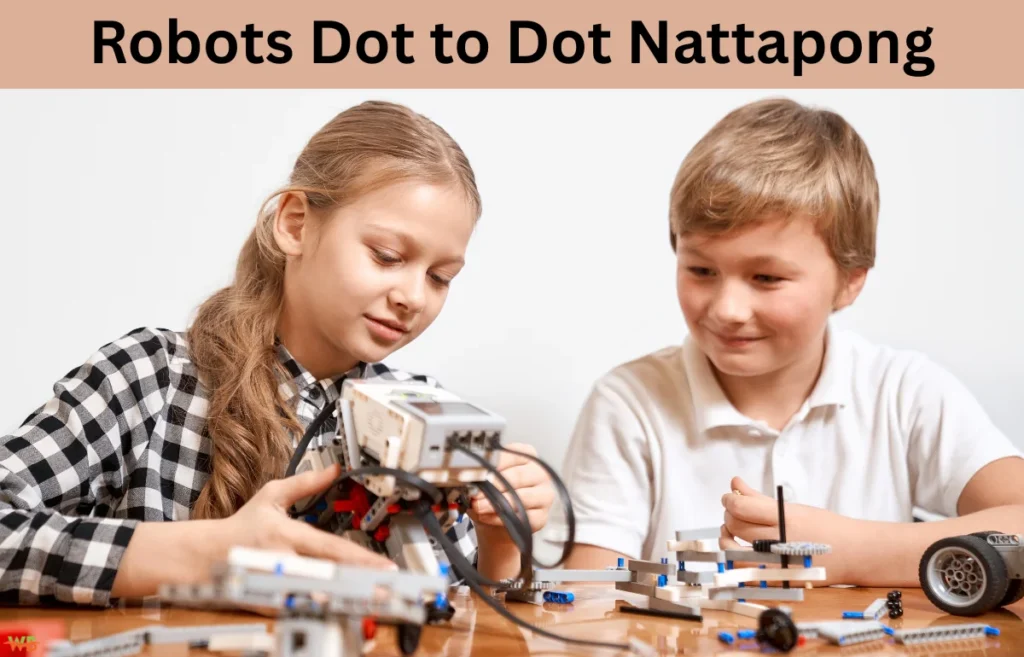The digital era has seen an unprecedented blend of technology and education. Among the innovative ideas gaining attention is robots dot to dot Nattapong, a captivating way for children to engage with robotics while enhancing their creativity. In this article, we will explore what robots dot to dot Nattapong is, how it works, its benefits, and how it can help foster a deeper interest in robotics and technology.
What is Robots Dot to Dot Nattapong?
Combining the classic dot-to-dot puzzle technique with robotics, Robots dot to dot Nattapong introduces a fun and interactive way to enhance children’s skills in a technological context. However, robots dot to dot Nattapong adds an exciting new layer by introducing robotic elements, allowing participants to engage with technology as they connect the dots to create shapes, images, or even robotic-themed designs.
This activity is available in various formats, such as worksheets, digital apps, or even interactive robotic kits where robots can physically draw the dot-to-dot images based on user input or pre-programmed commands. Not only does this approach boost creativity, but it also inspires curiosity about the integration of robotics and technology in artistic projects.
Why is Robots Dot to Dot Nattapong Beneficial?
Cognitive and Developmental Benefits
The robots dot to dot Nattapong activity serves multiple purposes in child development. It enhances cognitive skills by encouraging focus, concentration, and the ability to follow sequences. As participants connect the dots, they learn to recognize numerical or alphabetical sequences while improving their hand-eye coordination and spatial awareness. These skills are essential, especially in fields such as robotics and engineering, where precision and attention to detail are critical.
Moreover, this activity sharpens problem-solving abilities, as participants may encounter challenges while trying to figure out how to complete the images, thus promoting critical thinking.
Fostering Curiosity About Robotics
What sets robots dot to dot Nattapong apart from traditional dot-to-dot activities is its integration with robotics. As participants engage with the activity, they naturally begin to think about how robots work. It demystifies the world of technology, helping both young learners and enthusiasts engage with it more comfortably. By adding a robotic twist, children can get hands-on experience with robotics principles, such as sequencing, programming, and automation, all while having fun.
Additionally, incorporating robotics in a playful context fosters early STEM (Science, Technology, Engineering, and Mathematics) education, giving young learners a foundational understanding of concepts that will serve them in future educational and career pursuits.
Getting Creative with Robots Dot to Dot Nattapong: Tips for Hands-On Learning
Leveraging Robots Dot to Dot for Interactive Learning in Schools
As a teacher, you can bring robots dot to dot Nattapong into your classroom to engage students in both art and technology.
Step 1: Create Custom Dot to Dot Worksheets
Design worksheets featuring robotic themes or shapes. Depending on the age and skill level of your students, you can adjust the difficulty by using more complex patterns or robot-related illustrations.
Step 2: Introduce Technology
If you have access to digital platforms, consider using apps or software that simulate the robots dot to dot Nattapong activity. Students can interact with these platforms to complete robotic-themed puzzles, integrating both digital literacy and art into their learning.
Step 3: Hands-On Robotics Experience
For an advanced challenge, bring in actual robotics kits or programmable robots. Students can code these robots to complete the dot-to-dot drawings automatically. This hands-on approach not only solidifies their understanding of robotics but also makes learning more immersive.
For Parents: At-Home Robotics Fun
At home, parents can use robots dot to dot Nattapong to create an interactive and educational experience for their kids. Here’s how:
Step 1: Download Dot to Dot Worksheets
There are many online resources offering free downloadable robots dot to dot Nattapong worksheets. These worksheets can be printed and completed with simple pens or markers, helping children improve their fine motor skills and number recognition.
Step 2: Explore Digital Apps
Several interactive apps are designed to blend drawing with robotics. Through these digital activities, parents can guide children on how to follow instructions, turning learning into a fun experience. These applications also aid in developing digital literacy and sparking creativity.
Step 3: Incorporate Art and Creativity
Once the dot-to-dot image is complete, encourage children to color or paint their designs. This not only reinforces the concept of robotics but also lets children explore their artistic side while understanding how technology influences creativity.
For Robotics Enthusiasts: Elevating the Experience
For more advanced learners or enthusiasts, robots dot to dot Nattapong can be elevated with robotics kits, programming tools, and even 3D printing. Here’s how enthusiasts can explore it:
Step 1: Design and Code Custom Challenges
Using platforms like Arduino or Raspberry Pi, enthusiasts can design their own robotic dot-to-dot challenges. By coding small robots or using drawing machines, they can create interactive puzzles that follow user-inputted instructions, enhancing both coding and engineering skills.
Step 2: Create a 3D-Printed Robot
For those with access to 3D printers, you can design and print robotic figures or components that participants can use in dot-to-dot activities. This process allows you to blend the worlds of robotics, art, and technology seamlessly.
Step 3: Augment Reality (AR) Integration
As robots dot to dot Nattapong continues to evolve, one of the future directions could involve augmented reality (AR). Using AR technology, users could see the completed images appear in 3D in real-time, creating a more interactive and engaging learning experience.
Advancing Robots Dot to Dot Nattapong: What’s Next?
The outlook for robots dot to dot Nattapong is one of infinite opportunities. As educational tools and technologies evolve, the integration of augmented reality, virtual reality, and artificial intelligence could transform these activities even further. Children and learners could explore even more complex robotic designs, immerse themselves in interactive 3D environments, and experience real-time feedback from robots as they complete dot-to-dot challenges.
Additionally, the growing popularity of maker spaces and STEM-focused educational programs will likely increase the accessibility of such activities, making robotics more inclusive and available to young learners across the globe.
Final Thoughts
As an educational tool, robots dot to dot Nattapong brings together creativity, art, and technology, offering a captivating learning opportunity. By integrating robotics into a familiar and enjoyable activity, it helps develop essential cognitive skills, fosters curiosity about technology, and introduces children to the exciting world of robotics. Whether you’re an educator, a parent, or a robotics enthusiast, incorporating this activity into your learning journey is a fun and effective way to nurture the next generation of innovators.
As technology continues to evolve, so too will robots dot to dot Nattapong, offering new ways to engage with robotics and spark creativity. Embrace this innovative approach today and empower learners to build, create, and discover the endless possibilities of robotics.
FAQs
1. How can dot-to-dot puzzles aid in the development of fine motor skills in kids?
- Dot to dot activities encourage children to focus on hand-eye coordination, precision, and control as they connect dots in a specific order. This type of activity helps improve fine motor skills, which are essential for tasks such as writing, drawing, and using tools or technology.
2. What role does creativity play in robotics education for kids?
- Creativity is essential in robotics education because it encourages children to think outside the box, design innovative solutions, and approach problems with imagination. It allows them to explore various ways to combine art and technology, fostering both problem-solving and creative expression.
3. Can robotics activities be integrated into a classroom setting?
- Yes, robotics activities can easily be integrated into the classroom. Teachers can introduce simple robotics projects, coding exercises, and interactive learning tools that make complex STEM concepts more accessible and engaging for students of all ages.
4. What are some effective ways to introduce children to technology at a young age?
- Introducing children to technology at a young age can be done through interactive games, educational apps, and hands-on projects. These activities allow children to explore the world of technology in a fun and engaging way, building their confidence and curiosity for future learning.
5. How does incorporating robotics into education benefit future job prospects?
- By learning robotics and coding from a young age, children gain valuable skills in critical thinking, problem-solving, and technology use, which are highly sought after in many career fields. This early exposure opens doors to opportunities in engineering, computer science, and other STEM-related professions.
Learn about SSIS 469

Ton Roobprom is an experienced writer focused on practical advice across technology, business, travel, beauty, lifestyle, and home improvements. He specializes in distilling complex subjects into clear, actionable insights to help you enhance your daily life.


